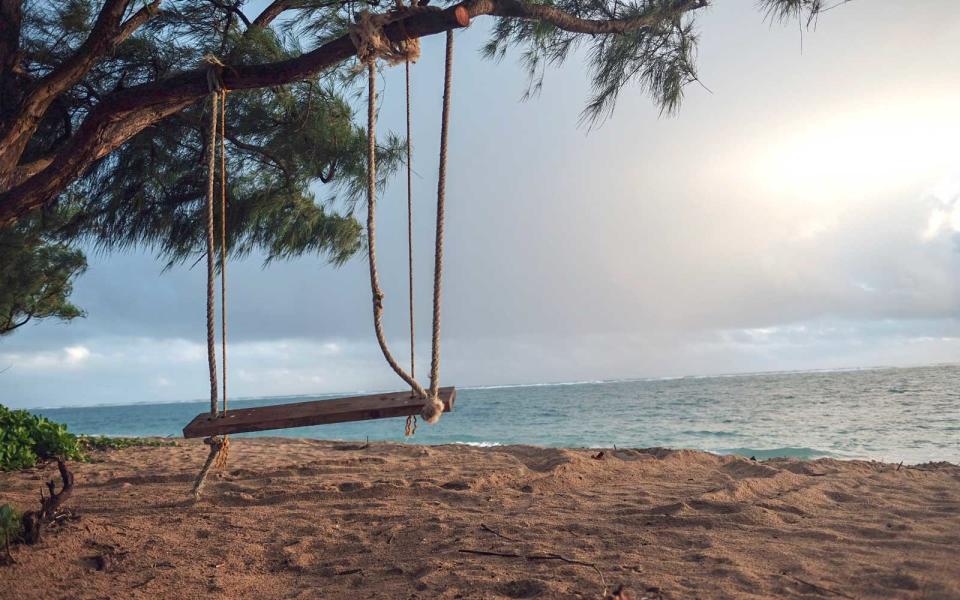Vans Is Working to Save Hawaii's Beaches — Here's How You Can Help
On a sticky-hot December day on the North Shore of Hawaii, thousands of fans gathered along the beach to watch their favorite surfers get barrelled in the pounding surf. The famed Pipeline break was firing that day, with waves mercilessly crashing on shore — but even the noise of the ocean was no match for the fans chanting and cheering on the surfers as they paddled further and further out.
With spectators come food and drinks and all the plastic cups, straws, wrappers, and utensils they bring. And all that trash could have been a problem for the local environment, which is already facing peril, but it didn’t, thanks to an innovative partnership between a local nonprofit and one of the world’s favorite shoe companies.
“When Vans first started thinking about the impact of our events, waste was something we knew we had to tackle,” Kim Matsoukas, senior manager, sustainability and social responsibility at Vans, told Travel + Leisure. “Any time you bring hundreds or thousands of people together, it’s important to think about the waste that will be created.”
To help combat the waste problem created by events like December’s Van’s Triple Crown of Surfing, the company looked for on-the-ground partners to help manage and reduce environmental impact. And it found a perfect one in Sustainable Coastlines Hawaii.
Sustainable Coastlines Hawaii, founded in 2008, is a grassroots effort aimed at keeping one of the most beautiful sections of coastline in the world clean and available for some of the 5.7 million travelers who pass through Oahu each year.
As part of its partnership with Vans, which began in 2013, the organization provides waste bins and signage that's set up along the beach throughout the event. They also take it one step further by literally going through all that rubbish to hand sort it. This way, the volunteers ensure every single thing that is compostable gets composted, every item that’s recyclable is labeled correctly, and everything that absolutely must end up in a landfill is kept to a bare minimum.
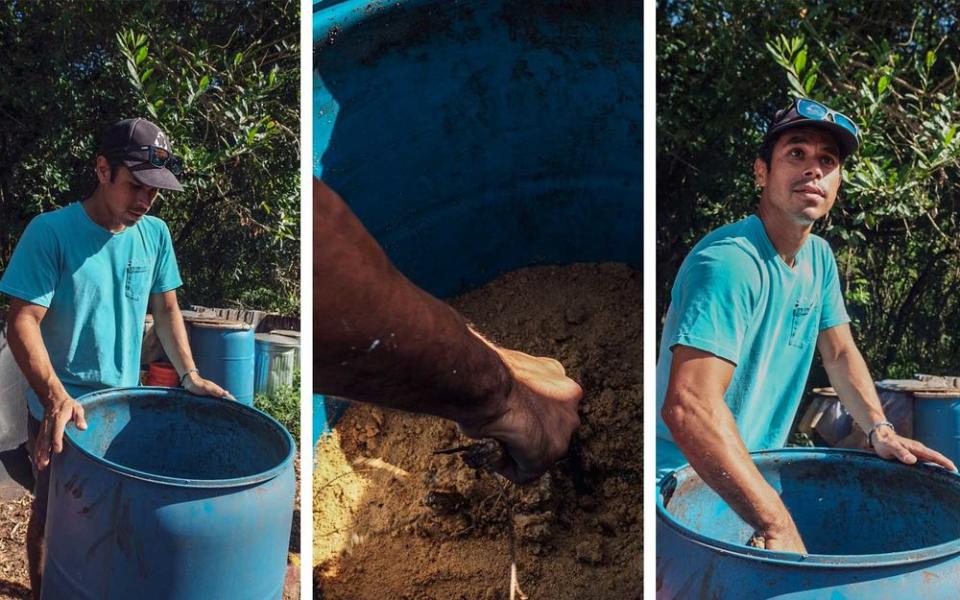
It’s a process I got to see firsthand while visiting the North Shore for the competition.
The first thing I noticed was that there really were no machines or fancy equipment involved. Instead, it was a few volunteers sifting through the garbage, studying the object, and deciding where it belonged. At the farm just across the street from the surf break where the sorting process is located, the team quizzed us on a few items and where we thought they belonged in the trash chain: a cup made from cornstarch, known as polylactic acid, with a “compostable” stamp on it, a paper plate, a plastic fork, and a banana peel. While the answers may seem obvious, your assumptions are likely wrong.
That plastic-looking cup that’s made of cornstarch? It’s not actually compostable, because in order to do so you’d need a commercial-grade composter. That is something the island does not — and cannot — have. The plate? Yeah, sorry, that’s not recyclable either because it’s covered in a very thin plastic coating to stop leaks (All those leak-proof plates you’ve been using for BBQs? Might want to stop buying those). The only things we could get right were the banana peel (compost) and the fork (recycle).
“This also helps us identify areas where we can improve,” Matsoukas said of the sorting process. “For example, it became clear after the first year we worked with them that we needed to have a small staff on site, even during lay days, as a lot of spectators still come to the beach. Lastly, they do a clean-up of the beach after every contest day to make sure no litter ends up in the ocean.”
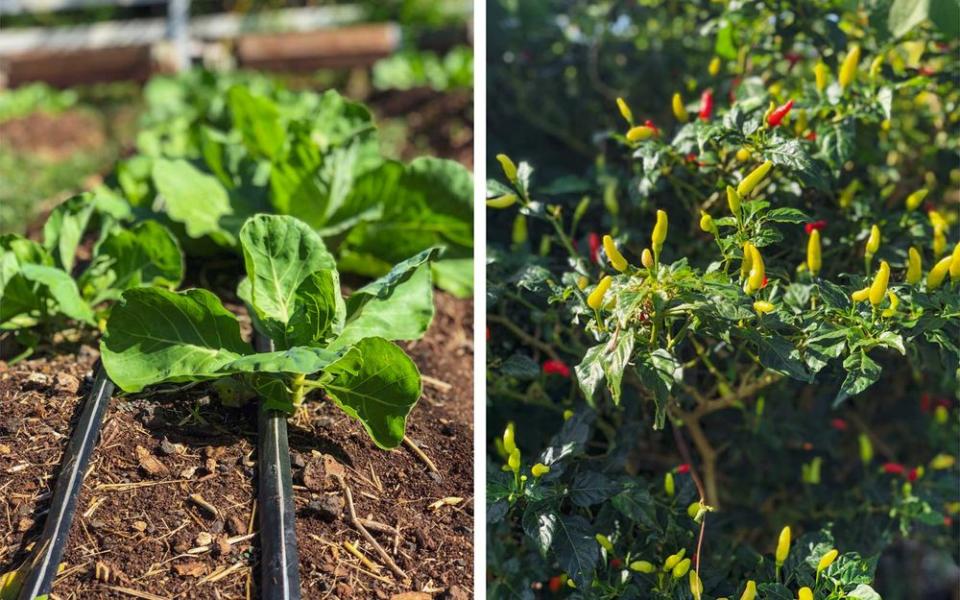
All that hard work put on by the organizations helped divert 70 percent of the trash from the event from a landfill to recycle or compost following the 2017 competition. The team expects that number to be even higher from the 2018 event. Though it’s a job Kahi Pacarro, executive director of Sustainable Coastline Hawaii, would be more than happy not to have.
“Ideally, we’d be put out of business because the beaches are clean instead,” he said in the midst of turning over a fresh batch of Vans-produced compost.
And this partnership isn’t just lip service from a worldwide shoemaker. In fact, the company’s headquarters was recently awarded LEED Platinum certification, Matsoukas noted. Its distribution center in Santa Fe Springs is a zero-waste facility, its packaging is made from 100-percent recycled materials, and all of the leather used in the famed surf and skate shoe is made with Leather Working Group certified material.
Though the sorting of trash may seem like a small task compared to these larger efforts, it’s one that Hawaii desperately needs.
In 2018, a study by University of Hawaii researchers found that 34 percent of the state’s shoreline is in danger due in part to the growing impact of sea level rise caused by climate change. Oahu’s North Shore happens to be one of the “high risk” zones cited in the study. (Beyond sorting trash, Sustainable Coastline is also helping fight this very risk by planting area-friendly vegetation along the beach to help stave off further erosion.)
Another 2016 aerial survey by the state’s Department of Land and Natural Resources identified more than 20,000 bits of debris, most of which was plastic, on the main Hawaiian islands. Though, this survey did not account for the thousands — or possibly millions — of teeny, tiny microplastics washing up on shore. Instead, it only accounted for pieces that had a massive surface area of five to 21 square feet.
“Hawaii is recognized around the world for our beautiful beaches. Unfortunately, we cannot say they are pristine because they’ve been so seriously impacted by our trash,” the department said in a statement at the time.
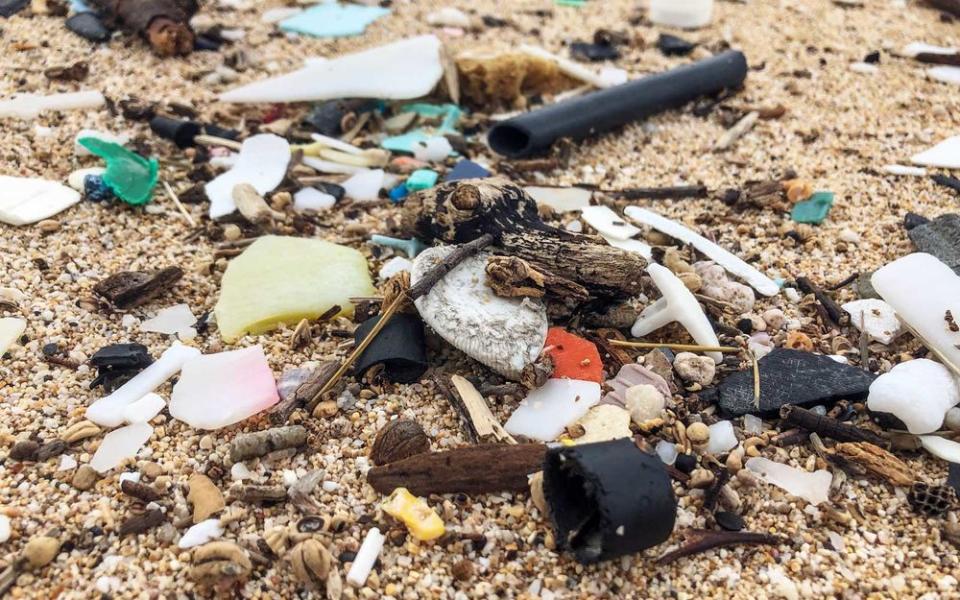
And before you start thinking this trash is coming in from the Great Pacific Garbage Patch or some other far off place, think again.
"Most of what was mapped is common, everyday items that someone haphazardly tossed onto the ground or directly into the water," Suzanne Case, DLNR chairwoman, said in a statement.
So yes, Vans caring exactly where every last bit of trash its fans create ends up is not only important but crucial so that future generations of surfers, travelers, and locals can enjoy the stretch of warm sand beneath their toes, too.
“Making the Vans Triple Crown of Surfing more sustainable made perfect sense for us,” Matsoukas said. “It takes place in a small island community with amazing natural resources. As a brand that cares about people and surfing, we wanted to make sure that we were protecting the natural resources that make surfing possible and respecting the community that welcomes us here for six weeks every year.”
To learn more about what you can do to ensure you’re being a sustainable traveler, check out our guide to responsible tourism here. Want to make a difference without even leaving your house? Buy some Vans and support their mission. Here are five unisex pairs perfect for your next sustainable getaway.
Vans Authentic Core Classic Sneakers
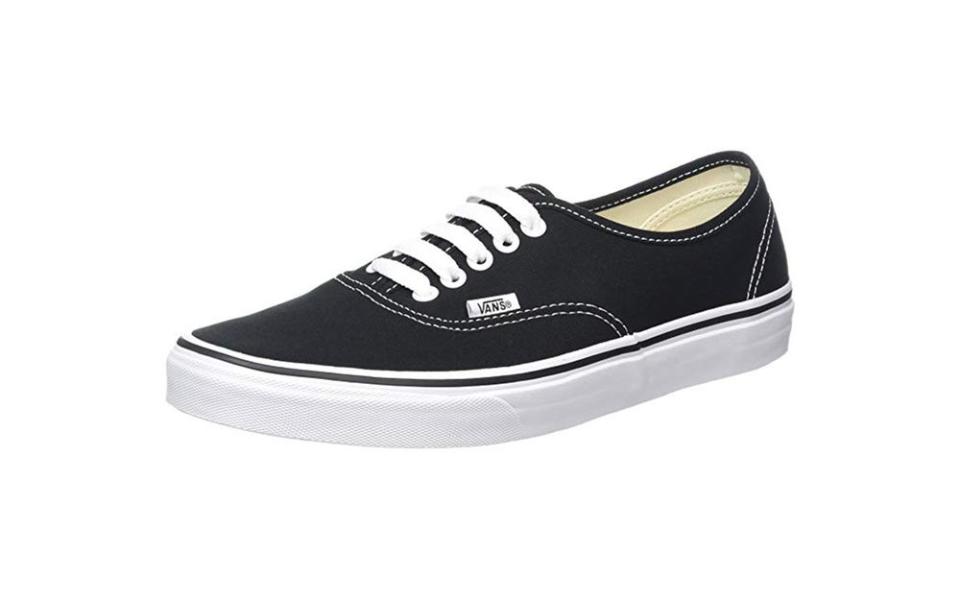
The Authentic Core Classic is just that — a classic. The simple Vans lace-up shoe comes in a plethora of colors, though we suggest sticking to its simple black and white color combo as it goes with everything.
To buy: amazon.com, starting at $29
Vans Unisex Classic Slip-On
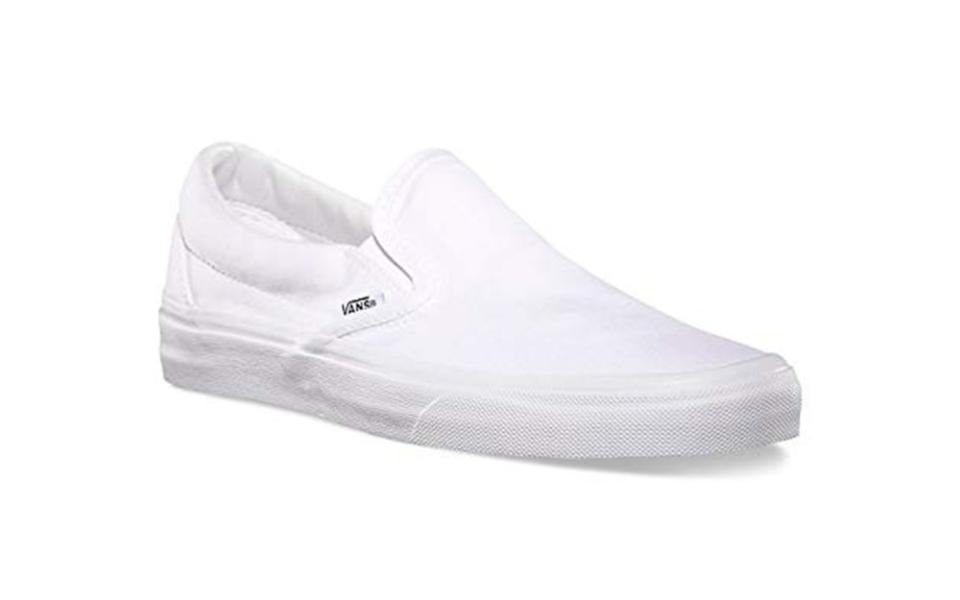
The Vans Slip-On may perhaps be the greatest travel shoe of all time. Its simple design ensures it fits with any ensemble and its easy on and off slide makes it ideal for getting through airport security.
To buy: amazon.com starting at $65
Vans Unisex Old Skool Classic Skate Shoes
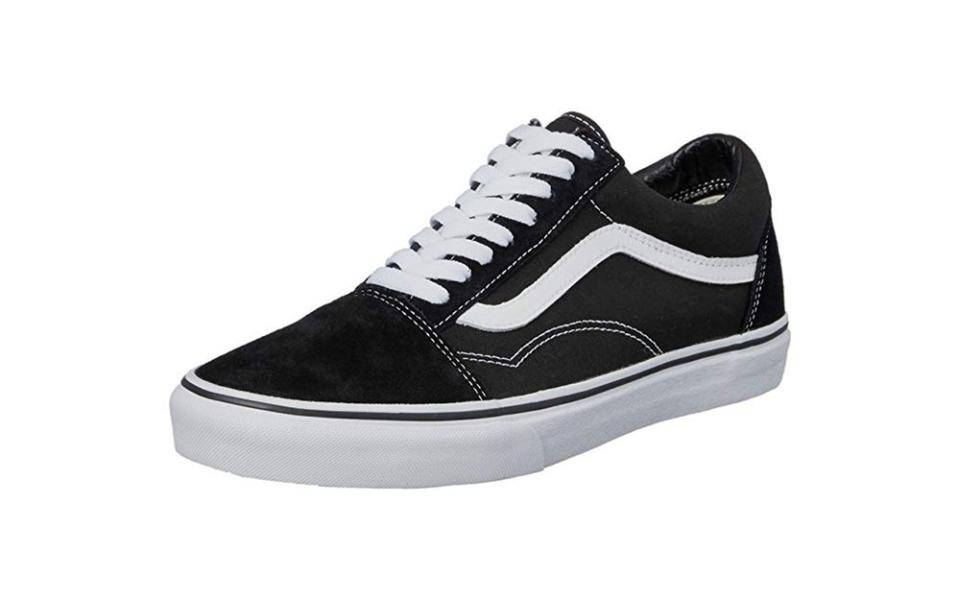
If you want to look instantly cooler on any trip, buy a pair of Old Skool Classic Skate Shoes. This design has been around forever for a reason — it’s dope. And you’ll look dope in it.
To buy: amazon.com, starting at $30
Vans Unisex Adults' Old Skool Suede Trainers
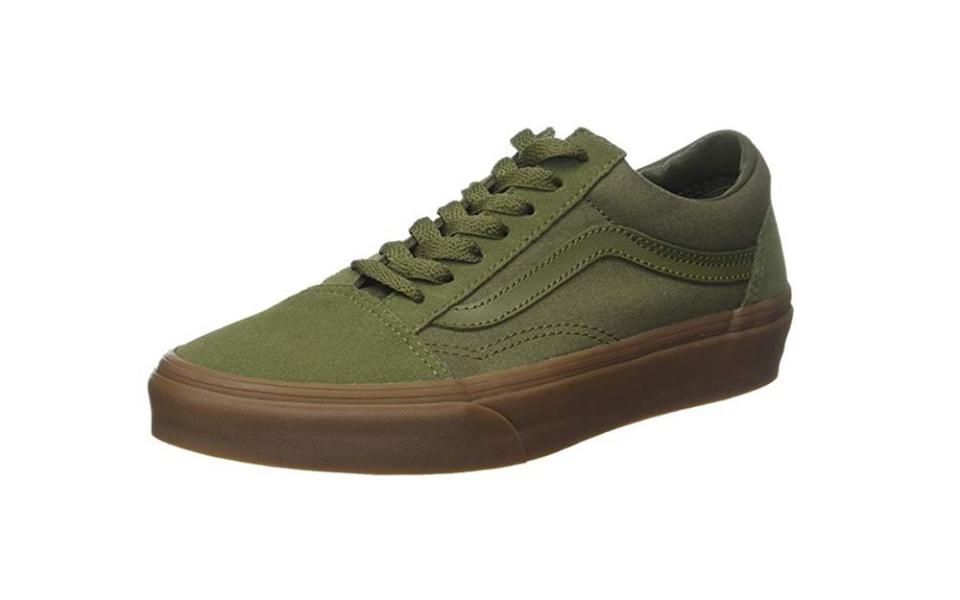
If you want to up the ante on the Old Skool classics, try buying a pair in suede. The shoe features the sustainable leather discussed above and comes in several colorways for you to choose from.
To buy: amazon.com, starting at $54
Vans Unisex Adults' Sk8-Hi
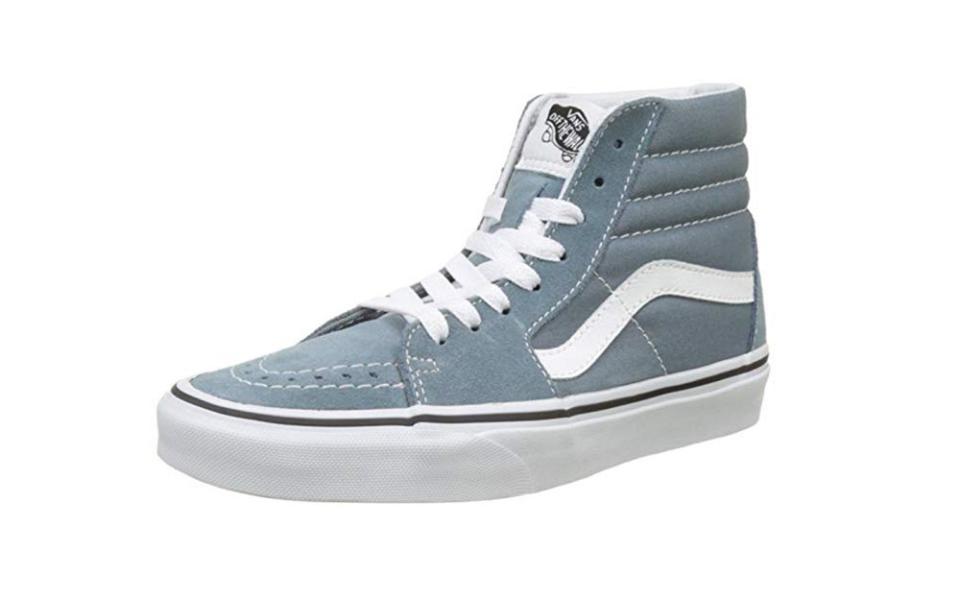
For one more classic option, check out the Sk8-Hi sneaker. The high top will get you through city terrain and will make your Vans collection complete.
To buy: amazon.com, starting at $53
